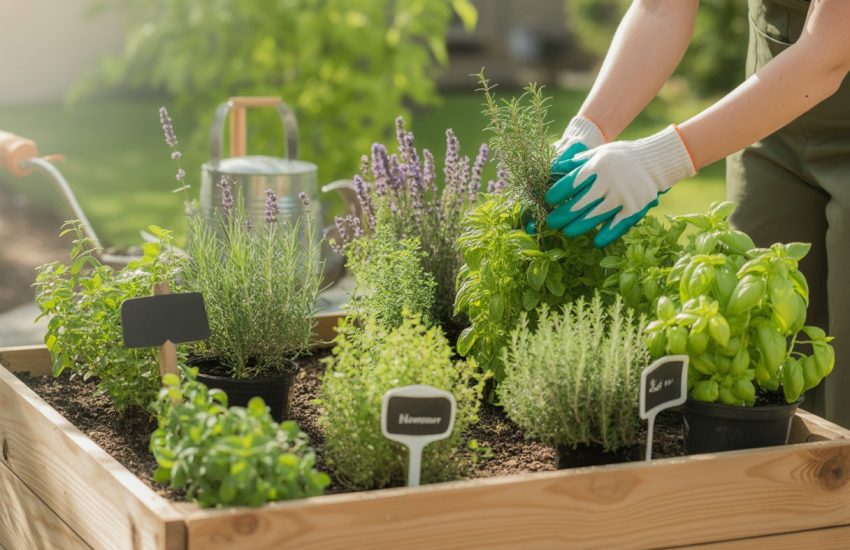Planting Seeds in a Garden: Tips and Tricks for a Successful Harvest
Planting seeds in a garden is a fundamental aspect of gardening. It is the first step in growing a variety of plants, vegetables, and fruits. To ensure a successful garden, one must know the proper way to plant seeds. This article will provide a guide on how to plant seeds in a garden effectively.

Before planting seeds, it is essential to prepare the soil. The soil should be well-drained, fertile, and free from weeds. It is also essential to choose the right location for planting. The location should receive ample sunlight and have good air circulation. Once the soil is prepared, it is time to plant the seeds. The depth of planting depends on the type of seed being planted. Some seeds need to be planted deeper than others. It is important to read the seed packet instructions carefully to determine the appropriate depth. After planting, the soil should be watered thoroughly. With proper care and attention, the seeds will germinate and grow into healthy plants.
Preparing for Seed Planting

Selecting the Right Seeds
Before planting seeds in a garden, it is important to select the right seeds. One should choose seeds that are appropriate for the climate and growing conditions of the region. Whether planting vegetables, flowers, or herbs, it is essential to choose high-quality seeds from a reputable source. Some popular seeds for planting include tomato, pepper, carrot, lettuce, and various flowers.
Understanding Soil and Compost
The soil is a crucial element in the success of a garden. Soil should be fertile and rich in organic material to provide the necessary nutrients for plants to grow. Compost is an excellent way to enrich the soil, and it is easy to make at home. A good mixture of soil and compost will help ensure healthy plant growth.
Planning Your Garden Layout
Planning the garden layout is essential to ensure that there is enough space for all the plants to grow. One should consider the available space, the number of plants, and the type of plants to be planted. Some gardeners prefer to plant in rows, while others prefer containers or pots.
Timing and Temperature Considerations
Timing and temperature are crucial factors to consider when planting seeds. It is important to know the average frost date in the region and to avoid planting seeds before that date. If the region has a short growing season, starting seeds indoors can help ensure that the plants have enough time to grow. Additionally, the temperature and light requirements for different plants should be taken into consideration.
Seed Starting Indoors
Starting seeds indoors is a great way to get a head start on the growing season. It is important to use a good potting soil and to moisten the soil before planting the seeds. Grow lights can be used to provide the necessary light for the seeds to germinate.
Germination Process
The germination process is the period when the seed begins to grow into a plant. The seeds should be kept moist during this time, and the temperature should be kept at an optimal level for the specific seed’s germination rate. Some seeds may require stratification, which is a process of exposing the seeds to cold temperatures to break their dormancy.
Planting and Caring for Seedlings
Sowing Seeds in the Garden
When planting seeds directly in the garden, it is important to choose the right planting time and planting depth. The seed packet will usually provide this information, but as a general rule, most vegetable seeds should be planted at a depth of two to three times their diameter. Spacing is also important, as overcrowding can lead to stunted growth and disease.
Transplanting and Hardening Off
Transplanting seedlings is an important step in the gardening process. Before transplanting, it is important to harden off plants by gradually exposing them to outdoor conditions. This helps to prevent transplant shock and allows the plants to adjust to their new environment. Once the plants have been hardened off, they can be transplanted into the garden.
Watering and Fertilizing Strategies
Watering seedlings is important for their growth and development. It is important to keep the soil evenly moist, but not waterlogged. Fertilizer can also be added to the soil to provide necessary nutrients. When fertilizing, it is important to follow the instructions on the package and not to over-fertilize, as this can lead to burning of the plants.
Protecting Plants from Pests and Disease
Disease and pests can be a major problem for seedlings. Damping off, a disease caused by a fungus, can kill seedlings before they have a chance to grow. To prevent this, it is important to keep the soil moist but not waterlogged and to avoid overcrowding. Pests such as aphids and caterpillars can also damage seedlings. To prevent this, it is important to monitor plants regularly and take action if pests are detected.
Harvesting Your Vegetables
Harvesting vegetables from seed can be a rewarding experience. It is important to harvest vegetables at the right time to ensure the best flavor and quality. The seed packet will usually provide information on when to harvest. Once harvested, vegetables can be enjoyed fresh or preserved for later use.


